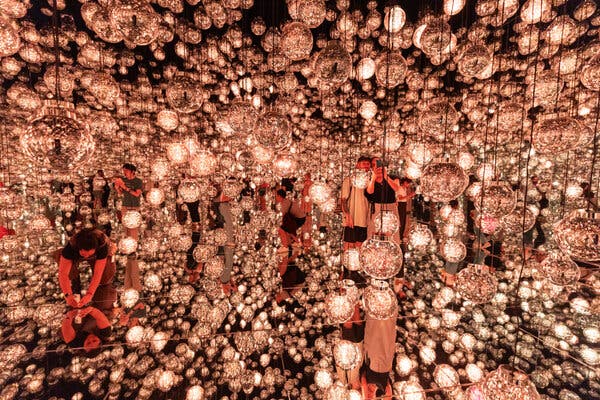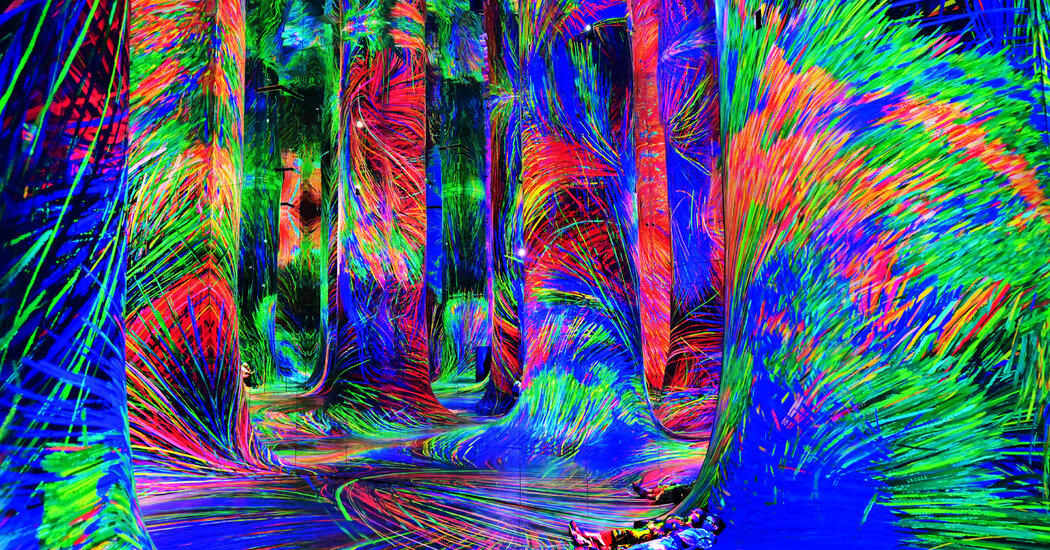There’s a reason millions of visitors are obsessed with teamLab’s art exhibitions: Where else can you spend an otherwise normal afternoon gazing into an infinity of crystal stars, chasing digital crows from room to room, or making flowers grow with the touch of a single, godlike finger?
TeamLab, an international collective of mathematicians, engineers and artists emerged in 2001, gaining traction with an early staging by the artist Takashi Murakami. Since then, the group, whose works aim to “navigate the confluence of art, science, technology and the natural world,” has expanded globally, with permanent and temporary exhibitions in Asia, Europe and the United States. Last year, teamLab Planets, in Tokyo, welcomed 2.5 million people, setting a Guinness record as the most visited museum by a single art group.
TeamLab currently has 12 exhibitions in Japan, as well as sites in places like Singapore, Abu Dhabi, Macau, Miami, New York, and Jeddah, Saudi Arabia. Installations or museums are planned for Hamburg, Germany; Utrecht, the Netherlands; Kyoto, Japan; and more.

Visitors explore teamLab’s nonlinear Borderless museum in Tokyo without maps or directions, encountering works like “Bubble Universe.”Credit…Shiho Fukada for The New York Times
These sensory playgrounds couldn’t be farther from a sterile white art gallery. You may find yourself wading through a pool (yes, actual water) with digital koi fish or playing with streaming whirlpools of pixels. Sometimes the installations are set outdoors in dark rice paddies, as in Izura, Japan, or use strings of live orchids that rise and drop depending on your path, as at the Planets museum. In “Sketch” installations at several sites you use crayons to color ina creature, which then comes alive as a projection on the walls and the floor.
The colors, textures and lighting are ripe for Instagramming, leading some critics to dismiss the installations as art candy or a tourist trap. But they also explore bigger themes of self, boundaries, interconnection, and life and death in the natural world. They lead you on a psychedelic journey without taking actual psychedelics.
